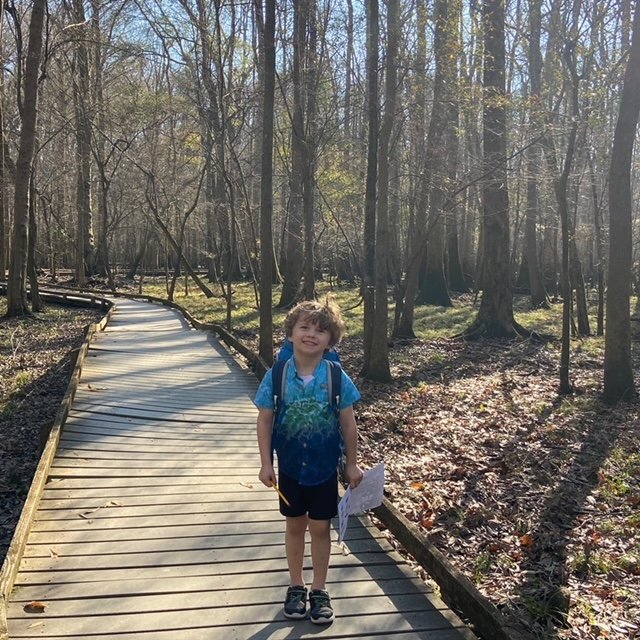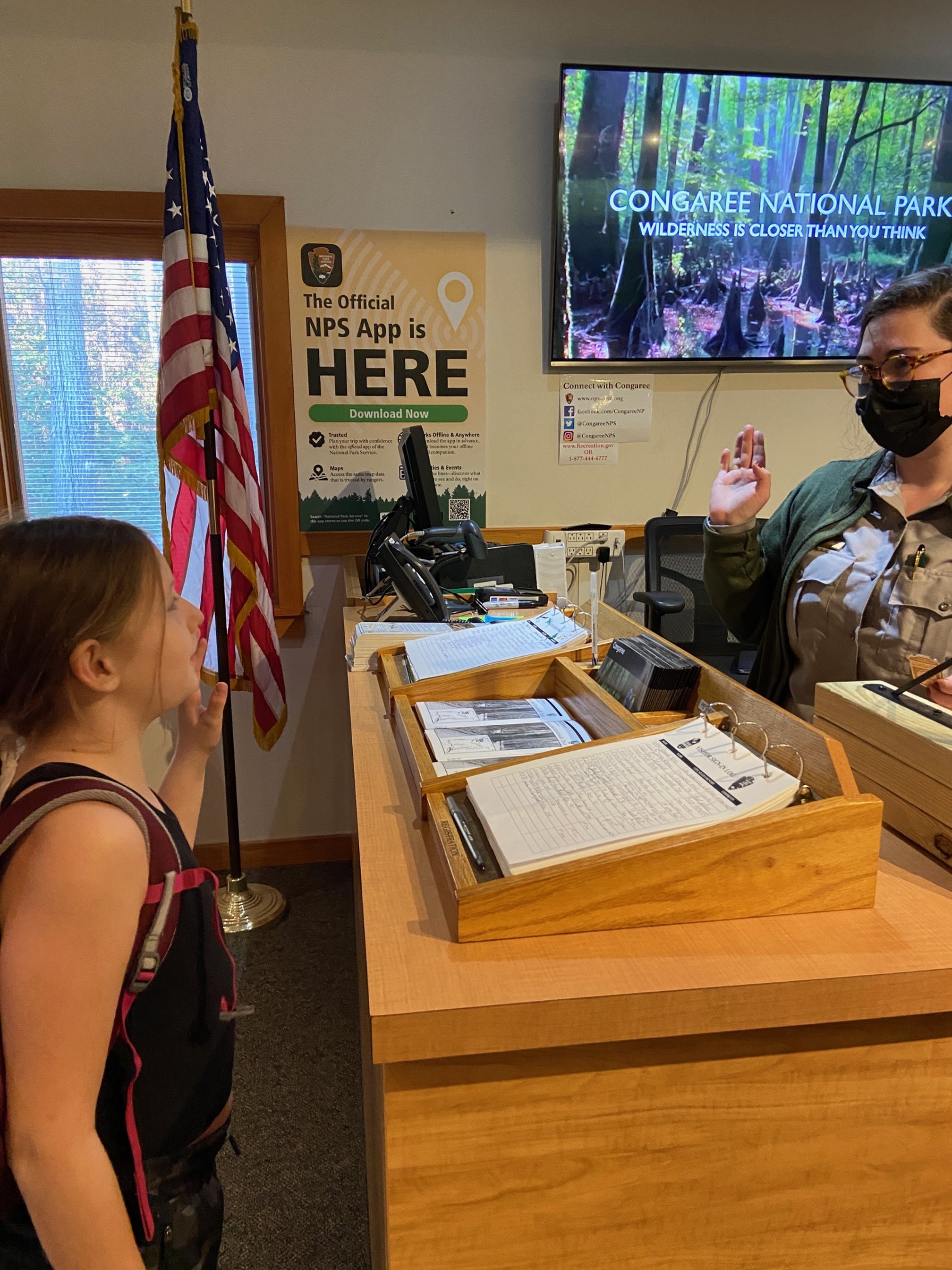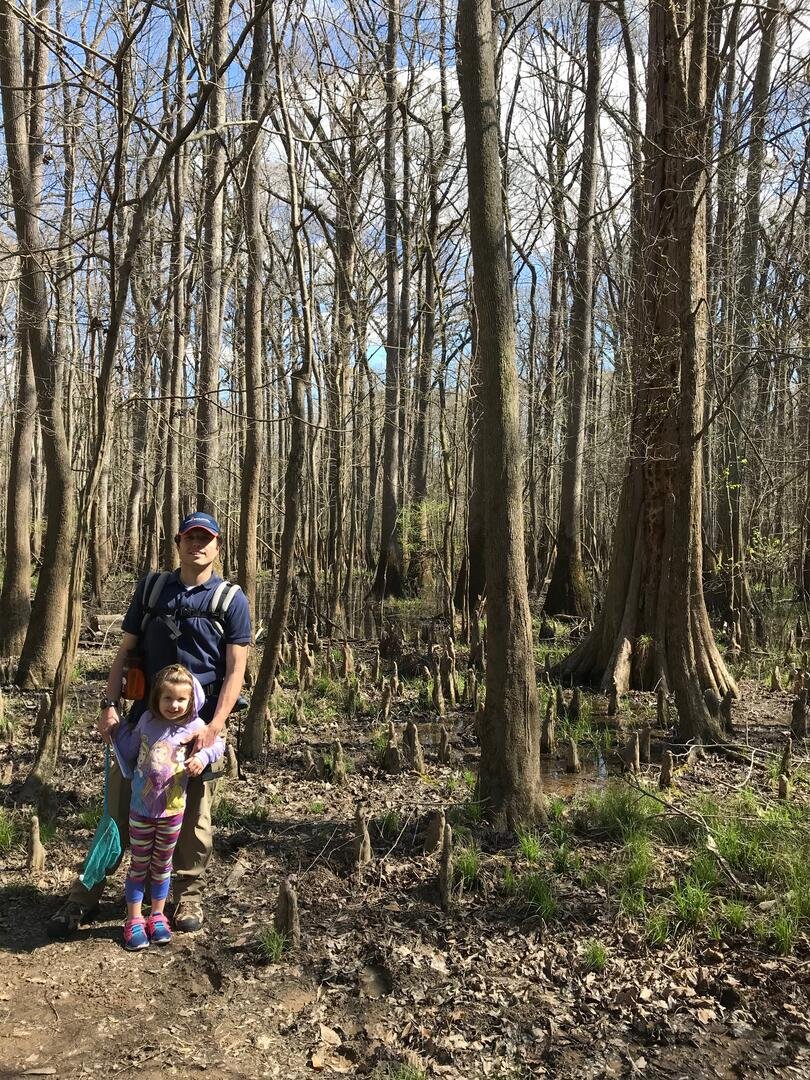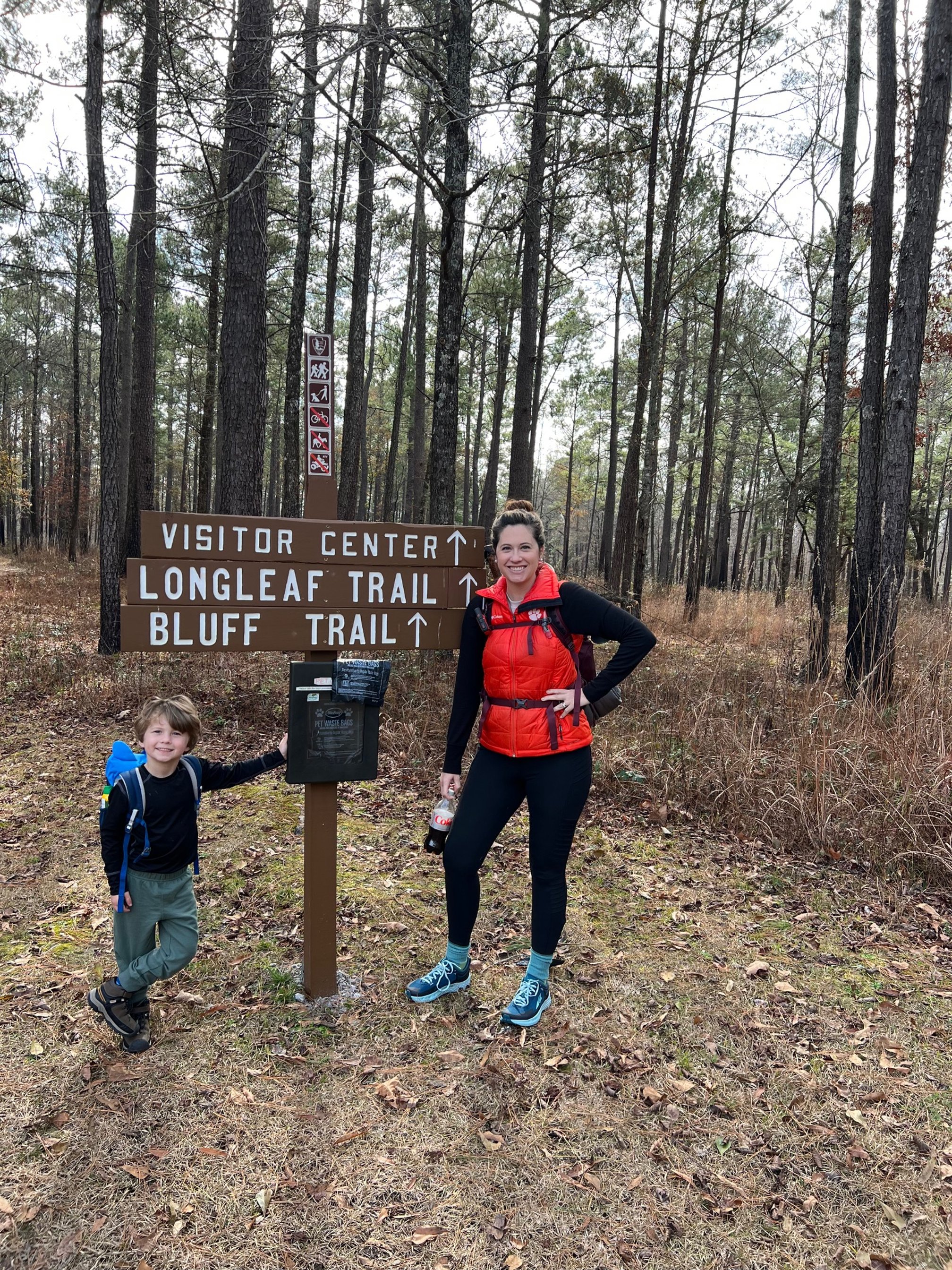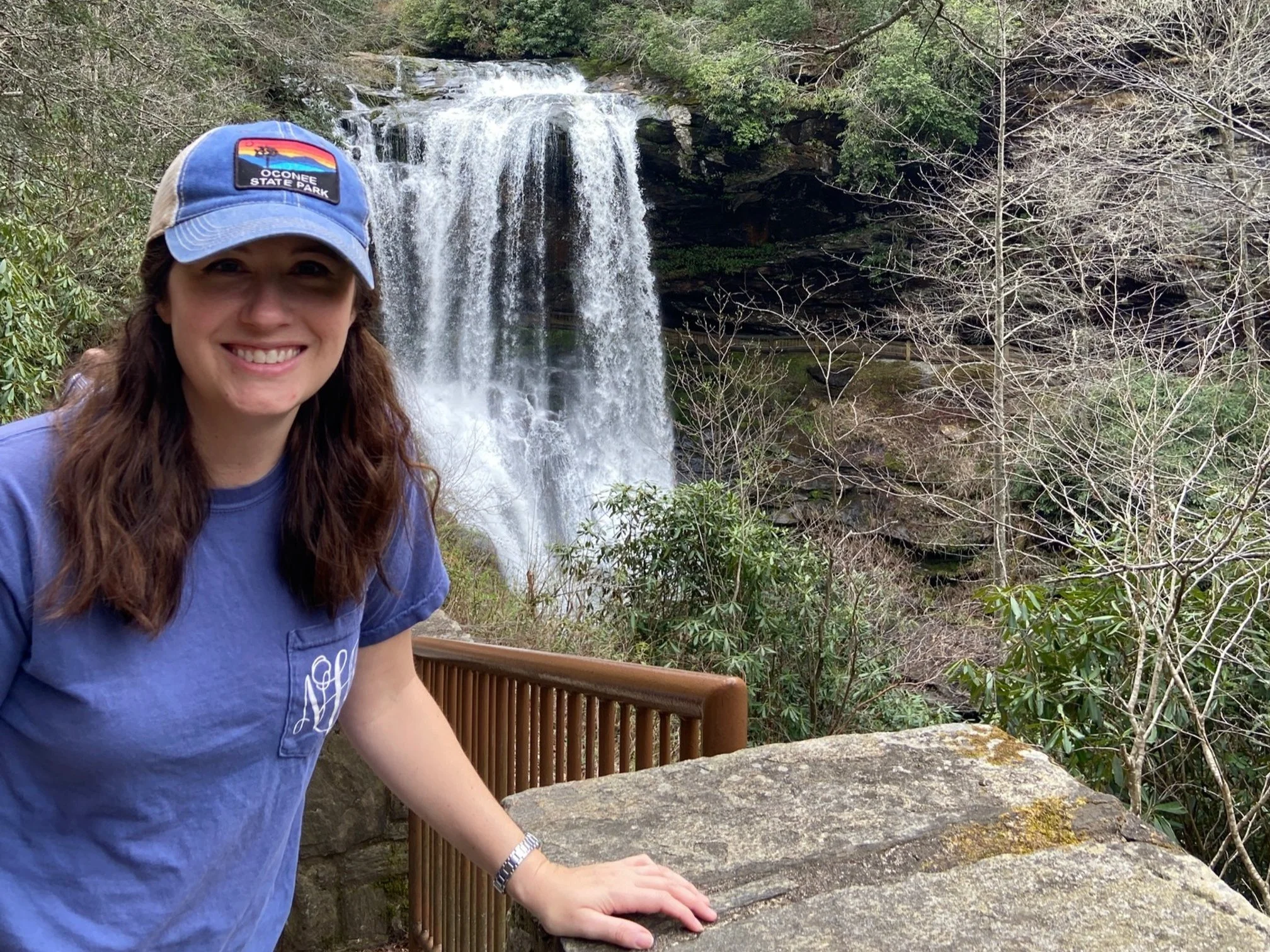Is Congaree National Park Worth Visiting?
If you’re wondering if Congaree National Park is worth visiting, the answer is yes!
This national park—the only one in South Carolina—offers protection to a unique ecosystem that has all but died out elsewhere in the South.
While you’re visiting, you’ll be able to walk alongside giants (of the tree variety!), see a wide array of wildlife in their natural habitats, and go on multiple easy hikes through the heart of the park.
My family and I live near the park, so we’ve been able to experience the park through the year and watch how it continually changes with the seasons.
Below, you’ll find my reasoning as to why Congaree National Park is worth visiting as well as the highlights that make this park a must do for your family.
The Camping Kiddos on the Boardwalk Trail at Congaree National Park
Why is Congaree National Park Worth Visiting?
To some people, Congaree is just a boring forest.
I’ve even heard people describe Congaree as “disappointing” and “something that shouldn’t be a national park.”
Poor Congaree. It’s HIGHLY underappreciated in my view, and it has something to offer visitors in every season. (Even if that “something” is mostly bugs in the summer. Ha.)
Since we live so close to the park, we have the unique opportunity to explore it from January to December. I promise: the park has so much more than boring trees.
Though, honestly, trees are pretty interesting—especially these trees.
Did you know that Congaree National Park is home to some of the tallest trees on the entire East Coast? You’d have to go to California’s redwood forests to top the champion trees in South Carolina.
Plus, there’s hiking, boating, and camping in the heart of South Carolina. In fact, I think it’s one of the best national parks on the East Coast.
In short, I think that people forget the reason that the national parks system was created.
The federal government saw something like Yellowstone (the first national park) and realized that it was so special that it needed to be placed in protection for future generations to experience it.
In that same vein, Congaree National Park provides a unique ecosystem—the hardwood floodplain—with the promise that this remaining example can be experienced by anyone.
So, just like Arches National Park is protecting a unique element of Utah, and Glacier National Park is preserving the lakes of Montana, Congaree National Park is protecting an isolated, never-to-be-seen-again ecosystem.
If you’ve never been to a national park, I’d recommend reading my national parks for beginners guide to help you plan your trip.
8 Reasons to Visit Congaree National Park
Now that I’ve piqued your interest about Congaree National Park, I’m sure you’re wondering what you can do during your visit.
Here are 8 things that make Congaree unique among the properties in the U.S. National Parks system!
My daughter at the Congaree National Park entrance sign
Location
Congaree National Park doesn’t require a specially planned road trip to get to like some of the other national parks. (I’m looking at you, Glacier!)
Instead, Congaree National Park is less than an hour away from Columbia, South Carolina’s capital city.
Columbia has 3 interstates that run through it—I-26, I-20, and I-77. You’ll find those brown national park signs for Congaree on I-77 near Cayce and on I-26 at Orangeburg (about 45 minutes south of Columbia).
However, you can easily access the smaller roads to Congaree from both 1-20 and I-26, as well, making this national park a great stop on a trip to Charlotte, Atlanta, Charleston, Greenville, Myrtle Beach, or Columbia.
Once you’re off the interstate, you’ll make your way through the South Carolina countryside, where you’ll go through several small towns. Make sure to slow down or you’re nearly guaranteed to get a traffic ticket.
The exit sign for Congaree National Park on I-26 near Orangeburg, South Carolina
Price
You can’t get much better than free!
While I understand that some of the national parks need to charge admission fees for visitor upkeep and amenities, my budget loves when I find a free way to spend the day with my kids.
Congaree National Park doesn’t have a lot of infrastructure other than the trails and visitors center, so I imagine that helps to keep costs low.
There’s no entrance booth here and no paid parking. Unless you want a souvenir, there’s nothing here that’s going to cost you money (other than the gas to get here!).
Just pack a picnic and your hiking shoes, and you’ve got an excellent low-cost visit waiting on you.
Champion Trees
The Camping Kiddos next to a former state champion loblolly pine
When people think “big trees,” they probably think about the redwoods out in California.
I’ve lived in South Carolina my entire life, and I didn’t know that we held the East Coast record for big trees until I visited Congaree for the first time several years ago.
And indeed they are some big trees.
You’ll find elm, cottonwood, and several types of oak trees topping 100 feet tall, with the biggest tree, a loblolly pine, at Congaree coming in at 167 feet. [Learn more about the trees of Congaree National Park here.]
While many of the biggest trees are further in the 11,000 acre backcountry of the park where few visitors go, you’ll still be able to see some giants on the trails near the visitors center.
In fact, one of the former state champion loblolly pines is just a few feet off of the Boardwalk Trail and clearly marked on the self-guided tour.
Easy Access Trails
While we’ve loved all of the national parks we’ve visited so far, some are definitely more accessible for beginning hikers, families with younger kids, and people with mobility issues.
For example, you’re not going to be able to do much at Grand Teton National Park or Arches National Park if you’re wheelchair bound other than the visitors centers.
But there are many other national parks with boardwalk trails and accessible areas like Old Faithful and Grand Prismatic Springs Boardwalk in Yellowstone National Park, the entire self-guided tour at Carlsbad Caverns National Park, and, of course, the Boardwalk Trail at Congaree National Park.
As I mentioned previously, we visit Congaree regularly, and most of the time, you can find us on the Boardwalk Trail.
The intersection of Boardwalk Trail and River Trail
It’s easy to follow and navigate, and my kids love the raised sections where they can look down into the forest to see what animals are nearby.
While the boardwalk trail is the only one that is wheelchair accessible, there are several other trails that are flat, short, and perfect for beginning hikers or families with small kids.
We also like the Firefly Trail, the trail to Bluff Campground, and Sims Trail for quick hikes with our kids.
Firefly Viewing
Each year in the late spring/early summer, the park explodes with thousands of fireflies each night!
It’s become such a sought after experience that a special firefly lottery is run to determine which visitors will get night-time passes.
The exact dates of the firefly viewings change each year, but they’re usually in mid-May.
If you’re one of the lucky people who get a pass, you’ll enter the park in the evening and will be supplied with a special red light flashlight. This will help you navigate the Firefly Trail without disturbing any of the animals active that night.
Fascinating Floodplain
Did you know that the Congaree River overflows its banks and covers much of the park each spring?
The flooding is a perfectly normal—and healthy—part of this ecosystem, even if it does make visits from February to April a bit difficult to nail down.
While the flooding varies in intensity from year to year, expect at least part of the Boardwalk Trail and River Trail to be underwater during the height of it.
Don’t worry, though! There’s still plenty of hiking elsewhere in the park.
If you are visiting during the annual flooding, it’s fascinating to see the park change literally by the hour as the water shapes and molds the area.
I’d suggest checking the official NPS site in the late winter and early spring to see if any flooding is expected during your visit.
Land and Water
PIN ME!
If you’re only hiking in Congaree, you’re only seeing half of the story!
As the park’s ecosystem is highly dependent on the Congaree River, it’s important to see that aspect of Congaree first hand.
While several of the hikes take you to various bodies of water in the park (River Trail to the Congaree River, Boardwalk Trail to Weston Bend, and Kingsnake Trail to Cedar Creek, to name a few), you’ll want to get out on the water if at all possible.
If you have a kayak or canoe, you can do a self-guided tour of the Canoe Trail. This water trail takes visitors along Cedar Creek to see areas of the park that tend to be overlooked by most visitors.
You can put in at the kayak ramp at the end of South Cedar Creek Road, where you’ll also find parking.
NOTE: I would not recommend paddleboarding on this stretch of water for a couple of reasons:
Thanks to the annual flooding, there are often fallen trees in and around the creek. Some of these would be difficult to go under on a paddleboard.
With the national park located where it is in South Carolina, there are many critters in and around the black waters that you probably don’t want to get too close to. While canoes and kayaks provide sturdy sides that keep snakes, lizards, and alligators out of the way. It might all be an illusion, but paddleboards just offer that same barrier.
If you’d rather go with a guide, there are a couple of outdoor outfitters in the Columbia area that run tours of Congaree National Park.
These tours supply canoes, personal floatation devices, and excellent commentary on the wildlife and history of the area.
Uncrowded Camping (easy hike-in)
On more than one occasion, I have gone through the stressful process of attempting to nab a camping site at highly popular national parks.
If you’ve wanted to camp inside of a national park but don’t want to fight others to get a spot, Congaree National Park is waiting for you.
Even in peak spring and fall camping times, the campgrounds usually don’t fill up other than a few select holiday weekends.
This means that you can have a relaxing experience from booking to check-in to fireside!
There are 2 campgrounds at Congaree, both of which offer primitive camping.
Longleaf Campground is really close to the parking area, but you’ll have to walk the fifty feet or so to your actual campsite.
Bluff Campground is a true hike-in option as it is more than a mile from the parking area.
Book sites at either campground on Recreation.gov:
Bluff Campground reservations here, and
Hopefully, you’re now planning your first trip to Congaree National Park! Check out my 2-day itinerary for Congaree to ensure you see and do everything, and my guide to the best time to visit Congaree National Park here.


